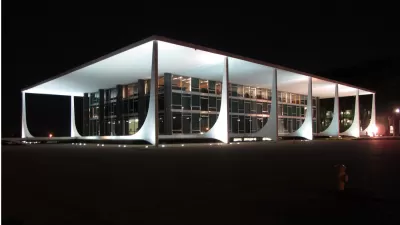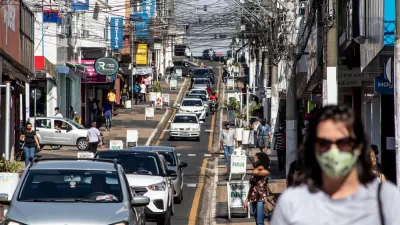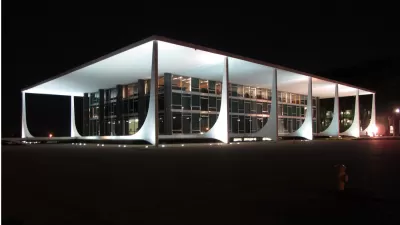A new exhibit at MoMA celebrates the "fitfully idealistic" architecture of Latin America, 1955 through 1980. Broad in scope, the exhibition ranges from Brasília's bold utopianism to the community-focused tactics of Bo Bardi.

Despite the apparent "prudishness" of figures like Fidel Castro, post-WWII Latin America had its share of visionary and even transgressive architecture. The MoMA exhibition "Latin America in Construction" takes a closer look: "The exhibition covers the years between 1955 and 1980, a fitfully idealistic era, when architecture had the capacity to literally build new societies. Photos, models, study sketches and videos exude the energy of post-war, post-colonial new beginnings."
Historical realities dampened some of this enthusiasm. From the article: "The agenda of rapid development often fell victim to the corruption and incompetence endemic to Latin America, with its tragic cycles of military coups and civil wars. Few of these many grand plans were fully realised; cities tended, instead, to grow convulsively, filling with refugees from the poverty-stricken countryside."
Participatory planning also had some of its beginnings during this era. "The MoMA exhibit includes housing plans that allowed low-income people to self-build all or part of their dwellings. Community-focused tactics would continue to develop as market-based development models took over after 1980, and have gained new currency as 'urban acupuncture'—an influential export."
FULL STORY: Exploring construction

Maui's Vacation Rental Debate Turns Ugly
Verbal attacks, misinformation campaigns and fistfights plague a high-stakes debate to convert thousands of vacation rentals into long-term housing.

Planetizen Federal Action Tracker
A weekly monitor of how Trump’s orders and actions are impacting planners and planning in America.

In Urban Planning, AI Prompting Could be the New Design Thinking
Creativity has long been key to great urban design. What if we see AI as our new creative partner?

King County Supportive Housing Program Offers Hope for Unhoused Residents
The county is taking a ‘Housing First’ approach that prioritizes getting people into housing, then offering wraparound supportive services.

Researchers Use AI to Get Clearer Picture of US Housing
Analysts are using artificial intelligence to supercharge their research by allowing them to comb through data faster. Though these AI tools can be error prone, they save time and housing researchers are optimistic about the future.

Making Shared Micromobility More Inclusive
Cities and shared mobility system operators can do more to include people with disabilities in planning and operations, per a new report.
Urban Design for Planners 1: Software Tools
This six-course series explores essential urban design concepts using open source software and equips planners with the tools they need to participate fully in the urban design process.
Planning for Universal Design
Learn the tools for implementing Universal Design in planning regulations.
planning NEXT
Appalachian Highlands Housing Partners
Mpact (founded as Rail~Volution)
City of Camden Redevelopment Agency
City of Astoria
City of Portland
City of Laramie




























